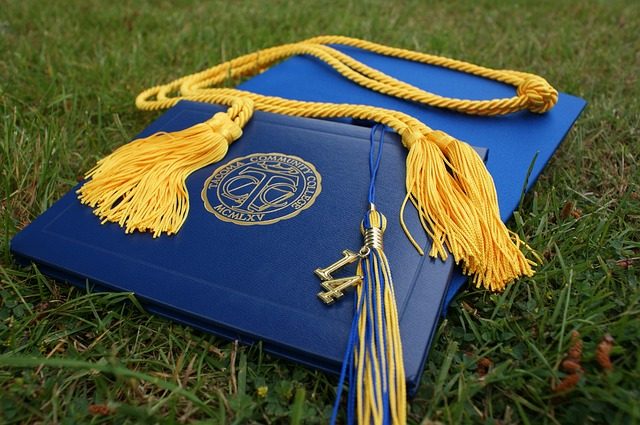Many students who pursue an Associate of Applied Science (AAS) degree often consider advancing their education by transferring to a bachelor’s degree program. This transition is not only beneficial for enhancing career opportunities but also plays a crucial role in increasing earning potential. In this article, we will explore the different aspects of transferring from Associate to Bachelor’s Degree in the Sciences, including the process, benefits, and available resources.
Table of Contents
How to transfer from an associate degree to a bachelor’s degree?
The process of transferring from an Associate degree to a Bachelor’s degree typically involves several key steps. Firstly, students need to research universities that accept AAS degrees, ensuring that their credits will transfer. It’s essential to consult the transfer policies of prospective institutions.
Students should also gather necessary documentation, such as transcripts and course descriptions, to facilitate the evaluation of their credits. After identifying a suitable program, completing the application process, including personal statements and references, is crucial.
Finally, students should stay in contact with academic advisors at both their current and prospective institutions to ensure a smooth transition and to understand how to apply for financial aid if needed.
What are the benefits of earning a Bachelor of Applied Science?
Obtaining a Bachelor of Applied Science can significantly enhance a graduate’s career prospects. One of the most notable benefits is the increased earning potential; studies show that bachelor’s degree holders earn nearly 40% more than those with only an associate degree.
Furthermore, a bachelor’s degree often opens doors to advanced job opportunities and management positions that require a higher level of education. Fields such as health sciences, technology, and business administration particularly value the educational depth provided by a bachelor’s program.
Additionally, earning a Bachelor of Applied Science can empower students with specialized skills, making them more competitive in the job market. It also allows for greater professional networking opportunities, aiding in career advancement.
Which universities accept AAS degrees for transfer?
Several institutions are known for their robust transfer policies, particularly those that recognize AAS degrees. For instance, East Carolina University offers programs specifically designed for AAS holders, allowing them to transfer up to half of their credits.
- University of Southern Indiana
- Florida Gulf Coast University
- University of North Carolina at Charlotte
- University of Wisconsin-Milwaukee
- Southern Illinois University
These universities not only facilitate the credit transfer process but also provide support services to aid students in their transition. Always check with the specific university regarding their transfer requirements and course equivalencies.
How long does it take to complete a bachelor’s degree after an associate?
The time it takes to complete a bachelor’s degree after earning an associate degree can vary significantly based on several factors. Typically, students can complete a bachelor’s program in two to three years if they transfer a significant number of credits.
However, this duration can be impacted by the number of credits accepted, the specific program requirements, and whether the student attends classes full-time or part-time. Some programs may also offer accelerated pathways that allow students to graduate faster.
Students should work closely with academic advisors to create a tailored education plan that aligns with their goals and timelines. This proactive approach is essential in managing the transition effectively.
What courses are required for a bachelor’s degree after an associate?
The courses required for a bachelor’s degree can differ depending on the chosen major and the institution. Generally, students will be required to complete core courses in their field of study, as well as general education requirements.
For example, if pursuing a Bachelor of Science in Industrial Technology, courses may include:
- Advanced Mathematics
- Engineering Principles
- Project Management
- Statistics for Industrial Applications
- Technical Communication
Additionally, many programs will require a capstone project or internship experience, allowing students to apply their knowledge in real-world settings. Always review the specific curriculum of the desired program for detailed requirements.
How to navigate the admissions process for transferring degrees?
Navigating the admissions process for transferring degrees requires careful planning and organization. Prospective students should start by thoroughly researching potential programs and their specific admissions criteria.
Once they have identified prospective schools, students should prepare their application materials, including transcripts, letters of recommendation, and personal statements. It’s vital to highlight any relevant experience or coursework that demonstrates readiness for the new program.
Engaging with admissions counselors can also provide valuable insights and assistance throughout the application process, helping students understand any nuances in transfer policies.
What support resources are available for students transitioning to a bachelor’s degree?
Many institutions offer a variety of support resources to assist students in their transition to a bachelor’s degree program. Academic advising is a key resource, providing personalized guidance on course selection and transfer policies.
Additionally, many universities have dedicated transfer coordinators who can assist students with the logistics of transferring credits and navigating the admissions process. Financial aid offices also play a crucial role, helping students explore scholarships and other funding options.
Support groups and workshops aimed at transfer students can also help foster a sense of community and provide practical advice on academic success.
Related questions about transferring from associate to bachelor’s degree
How to turn an Associate’s degree into a Bachelor’s?
To turn an Associate’s degree into a Bachelor’s, students should first research universities that accept their AAS credits. They will then need to prepare and submit applications, including transcripts and personal statements. Most importantly, staying in contact with academic advisors throughout this process can provide essential guidance.
How long does it take to go from AA to BA?
The transition from an Associate of Arts (AA) to a Bachelor of Arts (BA) generally takes about two to three years, depending on the number of transferable credits and the specific program’s requirements. Full-time students may complete their degrees more quickly than part-time students.
What is the quickest bachelor’s degree to get?
The quickest bachelor’s degree to obtain often depends on the program and the student’s prior experience. Some accelerated programs allow students to complete their degrees in as little as 18 months, particularly for those who have an Associate degree and can transfer a significant number of credits.
Can AAS be transferred?
Yes, an Associate of Applied Science (AAS) degree can often be transferred to a bachelor’s degree program. Many universities recognize AAS credits and have specific policies to facilitate the transfer process, making it easier for students to advance their education.










